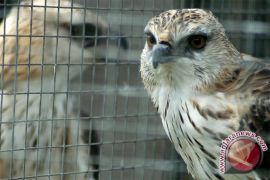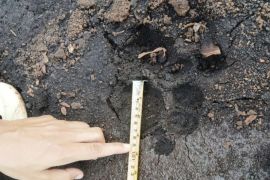"Indiscriminate deforestation is doing enormous damage to the hornbills` feed sources. This situation is increasingly threatening their ability to survive," said Dwi Mulyawati, an activist of bird conservation organization Burung Indonesia here Saturday.
She said hornbills fufill an important function in forest regeneration. Without hornbills, forests would soon lose their ability to regenerate and with the forests gone, so would all their natural potentials.
The regeneration of many tree species was dependent on the continued presence of fruit-eating animals like the hornbill that help spread the trees` seeds across the forest soil.
"Researchers have observed that hornbills can be appropriately given the nickname `forest farmer` because of their prowess in sowing seeds," Dwi said.
A hornbill can fly to and fro over an area of up to 100 square kilometers. This meant the birds belonging to the Bucerotidae family can drop seeds anywhere within the 100-suare-km area, she explained.
Reserch conducted in a production forest had shown a 56-percent reduction in hornbill feed sources as a consequence of the elimination of 76 percent of trees that produce their feed.
According to data collected by the International Union for Conservation of Nature (IUCN), of the 13 hornbill species that exist in Indonesia, the Julang Sumba (Aceros everetti) is threatened by extinction and has been listed in the vulnerable category.
"This species is only to be found in Sumba island (East Nusa Tenggara) and its population is now estimated at less than 4,000 with an average density of six individuals per square kilometer," Dwi said.
If the hornbills died out, certain tree species would inevitably disappear as aging parent trees would be expiring without successors.
Figs are one of the favorite feeds of hornbills that are available almost all year round.
It was estimated that some 200 fig tree species produce the hornbill`s main feed. Among all bird species, the horbill is considered to be the most adept at sowing fig seeds because of their cruising capability.
"According to hornbill and tropical forest researchers Margaret F.Kinnaird and Timothy G.O`Brien, there is a close correlation between hornbills and healthy forests," Dwi said.
Hornbills are part of the Bucerotidae family, a large group of birds that can be easily recognized, especially by their horns (Casque) at the base of their beaks. In the world there were 55 hornbill species, dispersed in the tropics of Asia and Africa.
Indonesia has 13 hornbill species. Nine of them exist in Sumatra where they are locally named enggang klihingan ((Anorrhinus galeritus), enggang jambul (Berenicornis comatus), julang jambul-hitam (Aceros corrugatus), julang emas (Rhyticeros undulatus), kangkareng hitam (Rhyticeros cassidix), kangkareng perut-putih (Anthracoceros albirostris), rangkong badak (Buceros rhinoceros), rangkong gading (Rhinoplax vigil) and rangkong papan (Buceros bicornis).
The four other species can be found in several of Indonesia`s main islands. In Sumba island they are locally named Julang Sumba (Rhyticeros everetti), in Sulawesi Julang and Kangkareng Sulawesi (Rhyticeros cassidix) and in Papua Julang Papua(Rhyticeros plicatus). Kalimantan has the same hornbill species as in Sumatra, except the rangkong papan (Buceros bicornis)..
In Indonesia, the hornbill is also called julang or kangkareng
Burung Indonesia is a nonprofit organization whose international name is Wild Bird Conservation Society of Indonesia (BirdLife Indonesia Association). It operates in partnership with BirdLife International which is based in England.(*)
Editor: Aditia Maruli Radja
Copyright © ANTARA 2011











